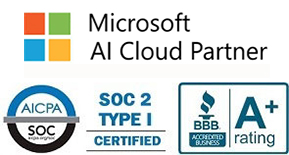
Did you know that the average SMB spends anywhere from $10-50,000 on IT services per year? Businesses in every industry are always looking for ways to reduce costs and increase profits. When it comes to IT expenses, there are a number of strategies that can be implemented in order to achieve these goals.
In this guide, we will take a look at five different IT cost reduction strategies that SMBs can use to save money and improve their bottom line. Implementing even one or two of these strategies can have a significant impact on your company's bottom line!
1. Evaluate Your Current IT Infrastructure and Services
As the world becomes increasingly digitized, it's more important than ever to have a robust IT infrastructure in place. But what exactly does that entail?
Evaluating your current IT infrastructure and services is a good place to start.
- Are your systems and data secure?
- Do you have adequate backup plans in place?
- Are your employees able to work remotely if necessary?
Asking yourself these types of questions can help you identify areas where your IT infrastructure might need some attention. Investing in the right tools and services can save you a lot of headaches down the road.
2. Negotiate Better Rates and Plans with Your Current Service Providers
We all know that feeling of being stuck with a service provider we're unhappy with, whether it's the:
- Phone service
- Cable company
- Internet service
It's frustrating to feel like we're paying too much, or that we're not getting the best possible service. However, it's important to remember that we always have the power to negotiate better rates and plans with our current service providers. And while it may seem daunting, it's actually surprisingly easy to do.
The first step is simply to call your service provider and voice your concerns. But don't stop there - be prepared to offer specific solutions or alternatives that would make you happy.
For example, if you're paying too much for your phone plan, you could ask for a lower monthly rate or for a package with fewer minutes. If you're not happy with your internet speed, you could ask for a higher-speed plan or for a discount. Remember, the key is to be prepared and to be polite but firm in your request. You may be surprised at how willing your service provider is to work with you.
3. Implement a Bring-Your-Own-Device Policy for Employees
A bring-your-own-device (BYOD) policy is when employees are allowed to use their own personal devices for work purposes, such as:
- Laptops
- Tablets
- Smartphones
There are many benefits to implementing a BYOD policy. It can save the company money on purchasing devices for employees. It also increases employee productivity as they are already familiar with their own devices and how to use them.
Finally, it can help to promote work/life balance as employees can work from anywhere at any time. However, there are also some drawbacks to BYOD policies. For instance, it can be more difficult to manage and secure data when it is stored on a variety of devices.
There is also the potential for increased support costs as employees may need assistance with configuring their devices for work purposes. Overall, a BYOD policy can be a helpful tool for businesses, but it is important to weigh the pros and cons before implementing such a policy.
4. Outsource Non-Critical IT Functions to A Third Party
As businesses become increasingly reliant on technology, the IT department has become one of the most important parts of the organization. However, IT functions can be expensive to maintain, and many businesses choose to outsource non-critical IT functions to a third party.
Outsourcing can help to reduce costs and free up internal resources, but it can also lead to problems such as reduced control over the quality of service and increased reliance on a single supplier. When deciding whether to outsource IT functions, businesses should carefully consider the risks and benefits.
Invest in Cloud-Based Solutions Instead of On-Premises Hardware
With the advent of cloud computing, more and more businesses are beginning to invest in cloud-based solutions instead of on-premises hardware. There are a number of reasons why this trend is gaining popularity.
First of all, cloud-based solutions are often more scalable and flexible than traditional on-premises hardware. This means that businesses can easily add or remove users as needed, without having to worry about the IT infrastructure.
Secondly, cloud-based solutions are usually more cost-effective than on-premises hardware. This is because businesses only need to pay for the resources that they use, instead of investing in costly hardware that may not be fully utilized.
Finally, cloud-based solutions can provide a higher level of security than on-premises hardware. This is because the data is stored off-site, making it less vulnerable to physical theft or damage. Consequently, there are numerous advantages to investing in cloud-based solutions over traditional on-premises hardware.
IT Cost-Reduction Strategies: Start Today
If you want to save money on your IT budget, these IT cost-reduction strategies can help. Evaluate your current infrastructure and services, and see if there are any areas where you can improve or get better rates.
You can also implement a BYOD policy for employees, which can help reduce costs. Finally, consider investing in cloud-based solutions instead of on-premises hardware. These are just a few ways to save money on your IT budget.
Are you looking for an IT consulting agency to help you cut costs? Contact us today for a free assessment!
About Us:
- 150+ 5-Star Google Rated IT Firm
- Microsoft Certified Cloud AI Partner
- SOC II Certified Managed Service Provider
- Better Business Bureau A+ Rated






